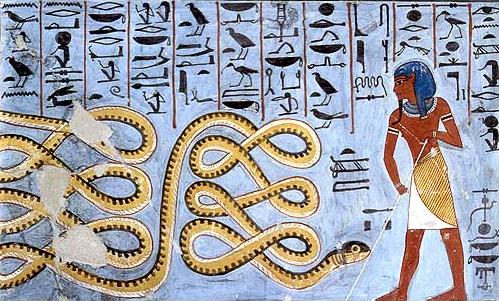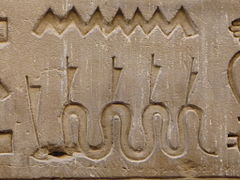A great piece of knowledge that I heard from a talk of Robert Ghrist, is that one of the earliest instances of non-trivial manifolds (i.e. of dimension higher than 2) appears in Dante's Paradise, where he essentially describes the cosmos as the union of two balls, one containing Earth, and the other containing the paradise and the celestial spheres, "glued along their boundary", hence essentially describing a 3-sphere.
I would be extremely interested to know if anyone else knows of similar instances where "complicated" topological spaces in fiction and classic, non-mathematical literature.
To be clear, I am trying to stay out of the usual torus/moebius strip stuff.
EDIT: I have been asked to give evidence of my statement about the 3-sphere in Dante. Before that, answering to those who say that this is being generous toward Dante, of course he did not describe the three sphere intentionally. His poetic, especially in the paradise, is allegoric, he explain theological concepts poetically through half-impossible images (the figure of god, made of three interconnected rings that mirror each other, is hardly a tentative to tell us about the Borromean links) and yet in the seemingly impossible description of the cosmos, he ends up describing a 3-sphere.
This being said. In Canto 28, Dante gets to the Empyrean, and looking down he sees the Earth surrounded by the celestial spheres. He then turns around and looks up, and he sees God as a point of light, surrounded by angelic spheres. Then
La donna mia, che mi vedea in cura forte sospeso, disse: «Da quel punto depende il cielo e tutta la natura»
My lady, who saw my perplexity — I was in such suspense — said: “On that Point depend the heavens and the whole of nature.”
The word "depende" translates from latin as "to hang from". So one interpretation is that the whole cosmos hangs from the point of light that is god. It then becomes extremely natural, with the modern mathematical language, to interprete this description as god being the "north pole" of the cosmos, earth being the "south pole", the angelic spheres being the "north hemisphere parallels, the celestial spheres being "south hemisphere parallels", and the primum nobile being the equatorial sphere in between. More terminology used by Dante goes in that direction, e.g. the fact that Dante insists that the universe is made of these two parts, the "original" (paradise and angelic spheres)nand the "copia" (earth and celestial spheres). See also this: https://mathinees-lacaniennes.net/images/stories/articles/dante.pdf, where these concepts are explained a bit better (i am no theologist, nor historian of literature).



